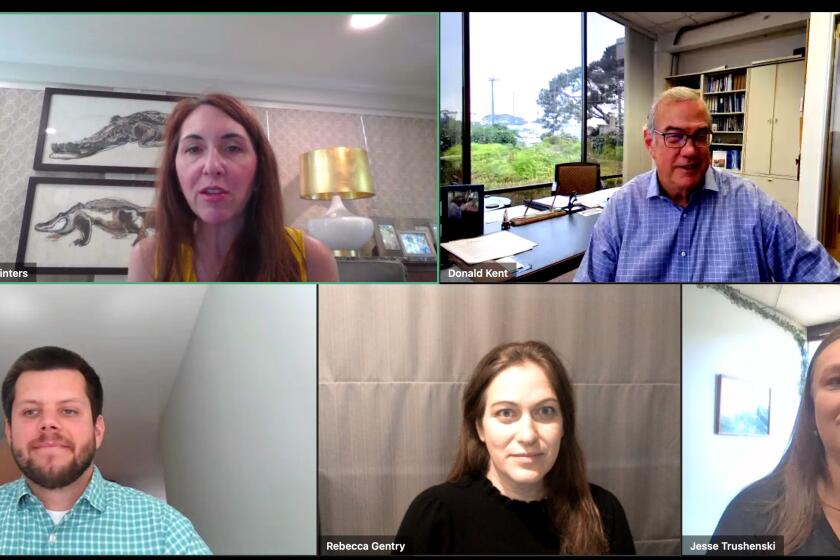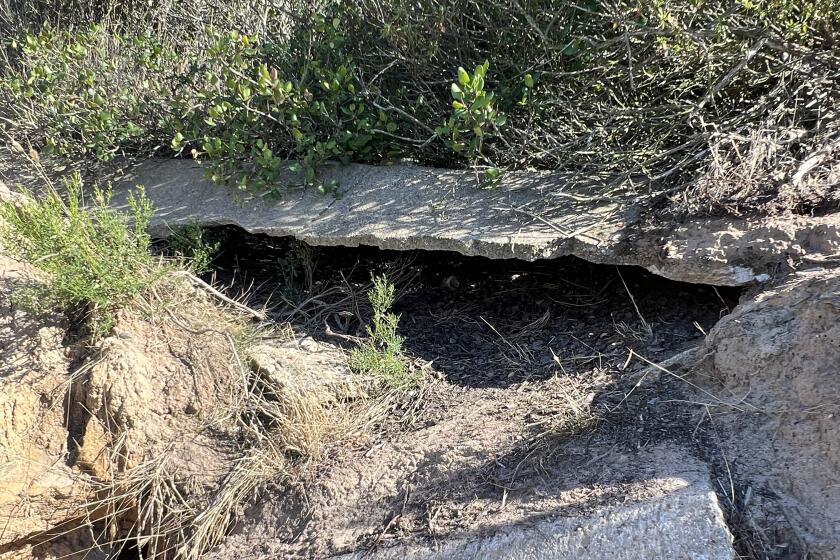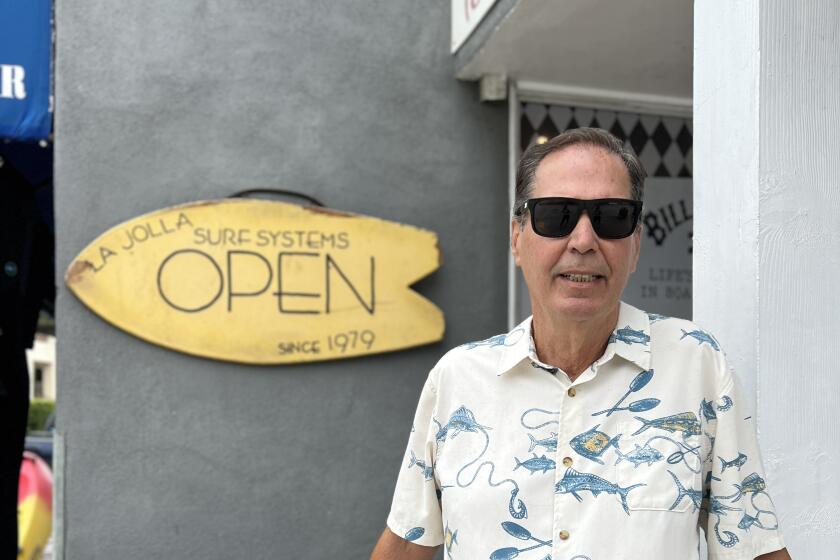Local waters found unsuitable for large aquaculture areas, but smaller fish farm proposal continues

A recent study concluded that the federal waters off San Diego are not suitable for some forms of aquaculture, but that doesn’t necessarily mean that proposals for local aquafarms are dead in the water.
The Pacific Ocean AquaFarms project, spearheaded by the Hubbs-SeaWorld Research Institute and Long Beach-based investment group Pacific6 Enterprises, aims to produce up to 5,000 metric tons of yellowtail fish annually in federal waters about four miles off the coast of Bird Rock.
The project would occupy 323 acres and include 28 submersible pens, according to the National Oceanic and Atmospheric Administration, which is serving as the lead agency.
The aquaculture project’s backers have said it would create economic opportunities and provide a local source for a fish that is now mostly imported.
Webinar comes as the Pacific Ocean AquaFarms project proposed for about four miles off Bird Rock is under review by the EPA. Environmental group San Diego Coastkeeper remains opposed.
The past two years, opponents of the finfish venture have cited concerns about pollution, harm to the local ecosystem and commercial fishermen being edged out.
On Jan. 18, a webinar presented by NOAA laid out a recent study undertaken by its National Centers for Coastal Ocean Science that identified areas in the Southern California Bight, or coastal bend, suitable for aquaculture opportunity areas, or AOAs. The study included the Gulf of Mexico as well.
“We are proactively looking for appropriate space for aquaculture to develop in the United States,” said Danielle Blacklock, director of the NOAA Office of Aquaculture.
She said appropriateness is partially measured environmentally. “We want to find areas that have the right kind of current flow and that are out of important areas for protecting marine mammals or endangered species.”
Appropriateness of a space also is measured economically, with a processing facility or port nearby.
“In addition,” Blacklock said, “we’re looking for areas that are socially sustainable. … We’re staying out of areas that are high-traffic areas, important fishing grounds, shipping lanes.”
Get the La Jolla Light weekly in your inbox
News, features and sports about La Jolla, every Thursday for free
You may occasionally receive promotional content from the La Jolla Light.
Ken Riley, one of the leads of the AOA atlas development, said suitability scores were based on data focused on national security; natural resources; industry, navigation and transportation; and fishing and aquaculture.
The San Diego region, from the waters off Camp Pendleton down to the Mexico border, was found to be highly suitable in the category of fishing and aquaculture but “had national security concerns ... with regard to military activities off of those coasts,” Riley said.
Given the national security concerns, its final suitability score deemed it unsuitable as an AOA, he said.

However, Jennie Lyons, director of public affairs for NOAA’s National Ocean Service, told the La Jolla Light that “current proposed commercial projects underway in Southern California are generally much smaller than our search criteria to identify AOAs ranging from 500 to 2,000 acres.”
“In most cases,” she said, “we have worked with individual offshore commercial projects and their applicants to identify the optimal location for farm siting for these smaller projects. This also includes a high level of coordination with federal, state and local agencies, but is done on a smaller scale because farm sites are not as large as potential AOA areas.”
“Ideally, at this size one AOA could contain multiple aquaculture farms,” Lyons said.
The 323-acre Pacific Ocean AquaFarms project was originally planned as 1,000 acres. In explaining the difference, Katie Wagner, a public affairs specialist for NOAA Fisheries, said an area of approximately 1,000 acres was initially sited as suitable for the project’s use, and about 323 acres would be occupied by the project. “The total area may change relative to the exact location of the project and final engineering requirements,” she said.
Wagner told the Light that Pacific Ocean AquaFarms “is proposed to be at one of two locations — the proposed site off San Diego and an alternative location off Long Beach.”
In the AOA atlas for Southern California, Riley said the area off the Port of Long Beach, one of the nation’s largest ports, “has a lot of vessel traffic ... so it will be less suitable [as an AOA], largely because of the navigation interactions and concerns.”
Matt O’Malley, executive director and managing attorney for nonprofit environmental group San Diego Coastkeeper, said his group is “pleased to see NOAA found the coastal areas off San Diego as unsuitable for aquaculture opportunity areas, and we hope these findings will help inform and bolster our opposition to the Pacific Ocean AquaFarms fish farm.”
But Lyons said “there has been no change to the environmental compliance and federal agency permitting processes that are currently underway for any aquaculture project in federal waters, including the proposed Pacific Ocean AquaFarms project off San Diego.”
“We are not aware of any national security constraints that would affect current aquaculture projects permitted or under consideration for permitting in federal waters off California,” she said.
Wagner said NOAA is still “in the process of preparing the draft environmental impact statement.” A further timeline was unavailable. ◆
Get the La Jolla Light weekly in your inbox
News, features and sports about La Jolla, every Thursday for free
You may occasionally receive promotional content from the La Jolla Light.





